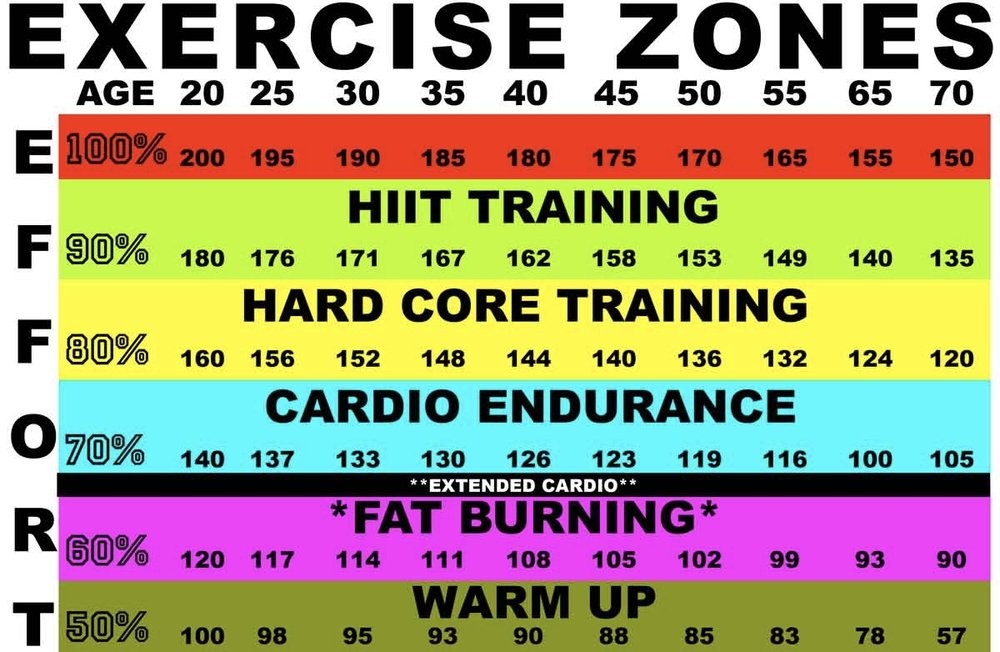
Contents
What Heart Rate Is Too High?
Your heart rate rises when you walk fast, run, do any strenuous physical activities, or have anxiety.
If you exercise regularly, or if you are an athlete, you may have a lower heart rate. Research says a low resting heart rate is healthy for your heart.
Your aim should be to keep doing moderate-to-vigorous exercises regularly. This helps lower your resting heart rate in the long run.
Exercising at a target heart rate ensures minimum undue stress on the heart and maximum benefit. The American Heart Association recommends people exercise in their target heart rate zones, calculated as a percentage (usually between 50 and 85%) of their maximum (safe) heart rate.
What is a dangerous heart rate?
Before doing any vigorous exercise, you should know your maximum heart rate and target heart rate, both of which vary by age. See the target heart rate zone and maximum heart rate according to the age chart
Going beyond your max heart rate is unhealthy. Your maximum heart rate depends on your age.
- Subtracting your age from 220 gives you your maximum heart rate. If your age is 35, and your max heart rate is 185 beats per minute, anything above 185 bpm is dangerous for you.
- Similarly, if you’re 20, your max heart rate is 200 bpm. So, a heart rate exceeding 200 bpm during exercise is dangerous for you.
- If you experience palpitations, irregular heart rate, shortness of breath, or chest pain, seek medical help right away. These symptoms could indicate an impending heart attack or other life-threatening heart problems.
- Your target heart rate zone is the range you should aim for to become physically fit. It is calculated as 60 to 80 percent of your maximum heart rate.
- Consult your doctor before starting any vigorous exercise, especially if you have diabetes, heart disease, or if you’re a smoker. Your doctor might advise you to lower your target heart rate by 50 percent or more.
- A resting heart rate of 120 bpm is considered high.
- Anxiety increases your heart rate.
IMAGES
How long is too long for tachycardia?
Tachycardia typically lasts seconds to minutes before returning to a normal rhythm. You may experience one or multiple episodes of tachycardia in a day, each lasting a few seconds.
Tachycardia does not always result in complications, but untreated tachycardia can lead to heart failure, stroke, or death. If you have been diagnosed with tachycardia and your episode has lasted longer than 30 minutes accompanied by shortness of breath and chest pain, seek immediate medical attention.
The severity of the condition does not always depend on duration of the tachycardia, but is determined by the type of tachycardia and associated symptoms such as dizziness, chest pain, fainting, and shortness of breath.
You must seek emergency services even if you experience one episode of tachycardia lasting a few seconds but associated with other symptoms.
Tachycardia is an abnormal cardiac rhythm where the heart rate exceeds 100 bpm while at rest. It disrupts the regular filling of the heart chambers, lowers cardiac output, and causes a significant drop in blood pressure. Reduced blood in arterial circulation leads to insufficient blood supply to organs, especially oxygen-sensitive brain cells, which may get severely damaged or die.
Types of tachycardia
Tachycardia is classified into several categories based on the component of the heart responsible for the condition.
- Atrial fibrillation
The most common type of tachycardia is characterized by irregular electric pulses in the atria (upper chambers of your heart).
It is regarded as severe due to the higher risk of blood clot formation and stroke.
It is characterized by fast heartbeats generated by abnormal electrical impulses in the ventricles. It inhibits your ventricles from pumping blood to the rest of your body. Normally, it lasts only a few seconds, but if it persists, it can be fatal.
What is the heart rate?
Generally, for adults, a heart rate of more than 100 bpm (tachycardia) is considered high.
Heart rate or pulse rate is the number of times your heart beats in a minute. It is a simple measure to know how much your heart works during rest or activities.
Heart rate is one of the vital signs that are checked regularly whenever you visit your doctor or get admitted to the hospital.
Your heart rate is lower when you are resting and higher when you are active or feeling stressed or anxious.
When you exercise, your heart needs to work harder, which increases your heart rate. As soon as you rest, the heart rate gradually decreases and returns to its normal level, usually within an hour.
How to check your heart rate?
Your heart rate can be checked by taking your pulse.
You can check your heart rate by counting your pulse. A pulse can be felt at various sites on the body like over the neck, wrist, and foot. To check your pulse on the wrist:
- Keep your middle finger and index finger over the inner part of the wrist (thumb side) and press gently until you can feel your pulse. The pulse is felt in your radial artery.
- After you have located your pulse, look at the watch and start counting the beats for 30 seconds. To get your heart rate, double this count. Alternatively, count the beats for 10 seconds and multiply the number by six.
If you find the rhythm of your heartbeat slightly irregular, count the beats completely until 60 seconds. Visit your doctor if you consistently have a fast and irregular heart rate.
What is the average resting heart rate by age?
You can check your resting heart rate when you are sitting or lying down, provided you have not smoked, consumed coffee, or exercised vigorously in the past hour. These activities temporarily increase your heart rate and may interfere with obtaining your accurate resting heart rate.
| Children (ages 6-15 years) | 70-100 |
| Adults (age 18 years and older) | 60-100 |
By clicking "Submit," I agree to the MedicineNet Terms and Conditions and Privacy Policy. I also agree to receive emails from MedicineNet and I understand that I may opt out of MedicineNet subscriptions at any time.
How to achieve a healthier lower heart rate
A heart rate lower than 80 bpm is associated with a lowered risk of dying from a heart attack according to the American Heart Association.
Staying physically active by regularly engaging in moderate to vigorous exercise is one of the best ways to achieve a lower heart rate and maintain a healthy and long life.
Changes in your lifestyle that may lower your heart rate include:
- Reducing the intake of coffee and caffeine-containing products
- Avoiding binge drinking
- Avoiding smoking
- Maintaining a healthy diet to manage weight
- Practicing deep breathing to manage stress and anxiety
From
Healthy Heart Resources
- Signs Psoriasis May Be Affecting Your Heart
- Diagnosing Hypertrophic Cardiomyopathy
- Exercising With HCM: How to Sweat Safely
Featured Centers
- What Are the Best PsA Treatments for You?
- Understanding Biologics
- 10 Things People With Depression Wish You Knew


